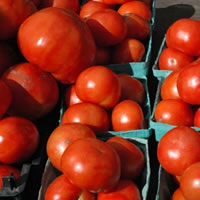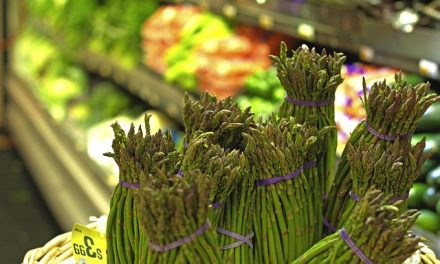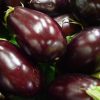You might not know unless you grew up in Europe, where fennel has been eaten for centuries, but the season for this delicately flavored vegetable has just begun.
Fennel looks something like celery and is occasionally confused with dill. It has a fragrant bulb, celery-like stems, feathery fronds and gold-yellow flowers. It is sometimes called by its Italian name, finocchio, or anise, because of its delicate, licorice taste.
Fennel contains vitamin C and beta carotene, a powerful antioxidant believed to help reduce the risk of cancer, enhance immunity and prevent cataracts.
Both the bulb and stems can be eaten raw or cooked. Their slight anise flavor complements many cooked dishes, especially fish, as well as salads. The leaves are used for garnish or added to a dish just before serving, to enhance flavor. Fennel seed, found in the spice section of markets, is used in both sweet and savory foods.
Look for fennel bulbs with no discoloration, firm stalks and bright green, perky fronds. Cut off the stalks across the top of the bulb where it turns white. Discard them or use to flavor sauces and broths. Slice off the root end. Peel away the tough outer layers. Halve the bulb vertically. You will see a triangular, hard core; using a small knife, cut out most of it, leaving enough to keep the layers attached if roasting or grilling.
If serving fennel raw, slice the bulb into thin wedges. Prevent discoloring by dropping the slices into a bowl of water and the juice of half a lemon added. Just before serving, drain them, pat dry and use in a mixed green salad. Or serve them on their own, fanned out on a plate and drizzled with a little olive oil. To add to a casserole or braise for a side dish, cut the fennel bulb into chunks and cook until tender. To grill or roast, simply lightly coat with an oil spray and sprinkle with salt and pepper beforehand.
Fennel and orange slices make a simple but tasty salad that can be served before or after a meal.
Fennel and Orange Salad
Makes 6 servings.
- 3/4 tsp. ground coriander
- 2 Tbsp. red-wine vinegar
- 2 Tbsp. fresh orange juice
- 3/4 tsp. salt
- 3 Tbsp. extra virgin olive oil
- 1/4 cup loosely packed fresh mint leaves
- 1 small red onion3 large navel oranges
- 1 large fennel bulb (about 1 lb.), stalks and fronds removed, cut in julienne strips
- 18 small, whole mint leaves, for garnish (optional)
- To make the dressing, heat a small non-stick skillet over moderate heat until hot. Add coriander and toast it, stirring constantly, until fragrant and slightly darker, about 1 to 2 minutes, watching carefully to prevent burning. Remove coriander from pan immediately and transfer to a small bowl.
- To the bowl add vinegar, juice, salt, oil and mint. Whisk until well blended. Cover and keep chilled until ready to use. (Dressing may be made 1 day ahead.)
- Cut onion in half crosswise, then slice very thin. Soak separated onion rings in a medium bowl of ice cubes and cold water for 15 minutes.
- Meanwhile, remove peel and pith from oranges. Cut oranges crosswise into 1/4-inch thick slices. Cut fennel bulb crosswise into thin slices.
- Drain onion rings and pat dry between paper towels. Arrange fennel, onion and orange alternately in a spiral ring design on 6 plates. Shake or whisk dressing to re-combine and drizzle over salad. Garnish with mint leaves, if desired.
Per serving:
126 calories,
7 g. total fat (less than 1 g. saturated fat),
16 g. carbohydrate,
2 g. protein,
4 g. dietary fiber,
332 mg. sodium.Diabetic Exchanges: 1/3 Fruit, 2 Vegetable, 1 Fat
AICR











